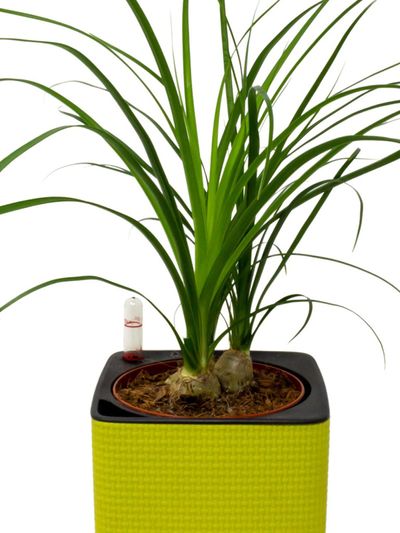About Ponytail Palm Plants
Another name for this plant is the elephant’s foot palm due to its thick, roughly skinned trunk. It is in the same family as agave plants and native to southeastern scrub desserts of Mexico. It is not a true palm but a succulent, which saves moisture in the trunk. In times of drought, the trunk will shrink in diameter and get slightly shriveled bark. When the rainy season arrives, it sucks up and stores as much moisture as it can and the trunk swells markedly. It is not a hardy plant in cooler zones and can sustain damage to the roots and trunk in excessively wet soils. As a container plant, ponytail palm care is minimal and the plant thrives on long periods of neglect. The palm is slow-growing but may get up to 30 feet (9 m.) in its native habitat, although it is more likely to be less than 10 feet (3 m.) in captivity.
Ponytail Palm Shoots
This lively, little plant produces side pups as a method of propagating itself. Once the palm has matured, it begins to grow smaller versions of itself that sprout from the base of the mother. Removing pups from ponytail palms is the easiest way to grow more of the succulent palm. Ponytail palm shoots divide easily from the parent plant and then require rooting to produce viable plants.
Propagating Ponytail Palm Pups
Spring is the best time to divide ponytail palm shoots. Carefully excavate around the base of the parent plant to expose the base of the pups. Use a clean, sharp knife and cut the pup away from the adult plant. Pups that are 4 inches (10 cm.) tall are usually forming a root base and make the best starts. Use a nearly soilless medium, such as a cactus mix or sand-based potting soil. Place the rooted end of the pup in a moistened medium in a well-draining container. Cover the container with a plastic bag lightly secured around the edges of the pot. Place the container in a warm room in moderate light. Every few days, uncover the pot and mist the surface of the soil.
Ponytail Palm Care For Newly Potted Pups
Provided soil drainage is adequate and you do not overwater the palm, this plant is remarkably unfussy. The plant only needs water every two weeks or so and you can completely suspend watering in the winter months. Cut off damaged or diseased foliage as it occurs and repot every 2 to 3 years. Optimum temperatures for ponytail palm plants are 70 to 80 F. (21 to 27 C.), but they do quite well in average home interior temperatures.
